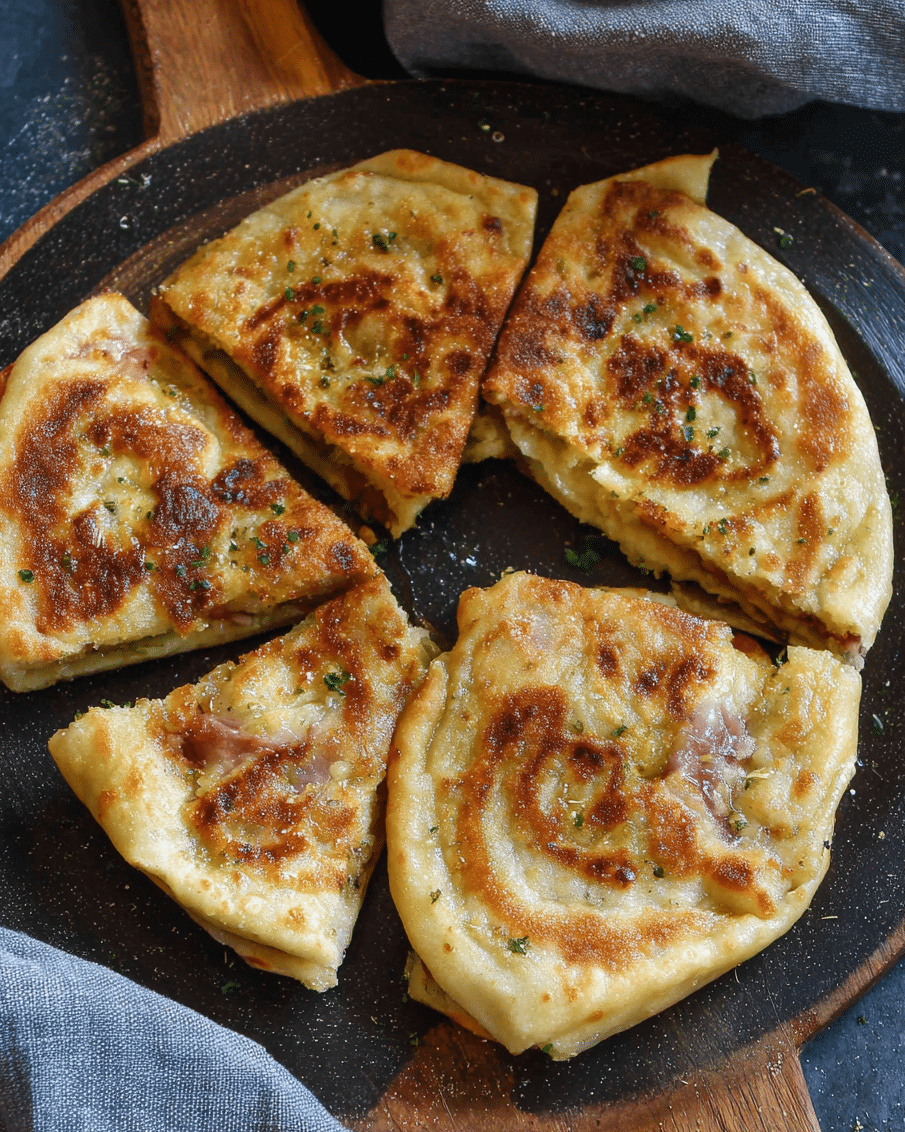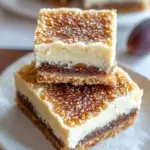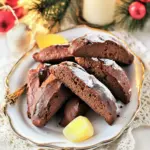Spiced Beef Flatbread, traditionally known as Guo Kui, is one of those dishes that instantly transports you to the bustling streets of northwest China. The name itself means “pot helmet,” a reference to its historical cooking method, yet its appeal lies in something much simpler—the comforting marriage of crisp, golden layers of dough wrapped around an aromatic beef filling. Imagine tearing into a flaky bread that crunches with each bite, only to reveal a juicy, seasoned interior perfumed with scallions, warm spices, and the iconic tingling sensation of Sichuan pepper. Unlike other breads or pastries, Guo Kui occupies a unique place in Chinese food culture. It is both humble and indulgent, quick street food yet deeply satisfying, the sort of dish people crave when they want comfort with a bold kick of flavor. Whether eaten in the morning with a bowl of congee or savored at lunch as a portable meal, this flatbread has earned its reputation as a culinary icon in Sichuan and beyond.
Full Recipe:
Ingredients
• All-purpose flour and water (ratio approx. 5:3 by weight) for the dough
• Ground beef, preferably with higher fat content, seasoned with Shaoxing rice wine, salt, white pepper, and water
• Scallions, finely chopped, to add freshness and aroma
• Ground Sichuan pepper (or substitutes such as five-spice, cumin, or black pepper)
• A flour-and-oil paste to create flaky layers in the dough
Directions
• Mix flour and water gradually until the dough is smooth, then let it rest to improve elasticity
• Season the ground beef with rice wine, salt, pepper, and water until sticky, then mix in scallions and spices
• Roll out the rested dough, spread with flour-oil paste, add the beef filling, and fold closed
• Pan-fry in a heavy skillet over moderate heat until golden and crisp on both sides
Nutrients
• Calories: moderate, with a balance of carbohydrates, protein, and fat
• Protein: substantial due to the beef filling
• Fat: moderate to high, influenced by beef fat content and frying oil
• Carbohydrates: provided by the dough
• Fiber: minimal, contributed mainly by scallions
• Sodium: moderate, based on salt and seasoning additions
Why This Recipe Stands Out
What makes this spiced beef flatbread special is its ability to transform a handful of basic ingredients into something extraordinary. At its core, the recipe is as simple as flour, water, beef, and scallions, yet the technique of layering the dough with oil creates a beautifully crisp crust that shatters lightly when bitten into. Inside, the filling is intensely flavored, sticky enough to stay cohesive but juicy enough to provide contrast to the bread’s crunch. The addition of Shaoxing rice wine and Sichuan peppercorns elevates the dish, introducing depth, aroma, and that unmistakable numbing heat. Unlike Western meat pies or stuffed breads, Guo Kui leans on minimalism and balance. Every element, from the dough’s crunch to the beef’s savoriness, contributes without overwhelming. It is this precise balance that makes each bite memorable—crisp outside, tender inside, and bursting with fragrance.
The Benefits of the Ingredients
The ingredients in this recipe may appear modest, yet each one plays an important role in both flavor and texture. Flour and water form the foundation of the dough, creating elasticity when kneaded and structure when fried. This plain base becomes extraordinary through lamination, where the oil-flour paste introduces delicate layers that crisp beautifully. Ground beef is the protein powerhouse here. Choosing beef with higher fat content is essential because the fat melts during cooking, keeping the filling moist and lending flavor richness. Scallions may seem like a minor addition, but they are essential for balance. Their brightness cuts through the meatiness, while their aroma permeates the bread, giving a freshness that prevents heaviness. Sichuan pepper, or its substitutes, brings more than heat—it delivers that tingling, numbing sensation that excites the palate and makes the dish unmistakably Chinese. Finally, Shaoxing rice wine adds subtle umami depth and complexity, drawing out flavors from the beef while providing a slightly sweet undertone. Altogether, the ingredients reflect harmony, making Guo Kui flavorful without excess.
Cooking Tips
Success with Guo Kui depends as much on technique as it does on ingredients. Resting the dough is a crucial first step, as this allows gluten to relax, making the dough easier to roll and less likely to spring back during shaping. When preparing the beef, aim for a sticky, almost paste-like mixture; this ensures the filling won’t fall apart inside the bread. Don’t rush the lamination step, as spreading the flour-oil paste evenly is what gives the flatbread its signature flakiness. When pan-frying, moderate heat is your best friend. Too hot, and the exterior will burn before the interior is cooked; too low, and the bread will absorb oil rather than crisp up. Using a thick-bottomed skillet distributes heat evenly, preventing hot spots. Another useful tip is to gently press the flatbread with a spatula while frying, encouraging even browning and ensuring the meat cooks fully without the bread puffing excessively. Finally, allow the bread to rest for a minute or two after frying. This helps the layers set and makes slicing cleaner and easier.
Serving Suggestions
Traditionally, Guo Kui is eaten hot and fresh, often with a simple bowl of congee or a light soup. The warm broth provides contrast to the richness of the flatbread, making it a complete and balanced meal. For a more refreshing experience, pairing it with pickled vegetables or cucumber salad is ideal, as the acidity cuts through the fat and refreshes the palate. In a modern kitchen, you might slice the flatbread into wedges and serve it as an appetizer with dipping sauces such as chili oil, soy sauce with garlic, or a tangy black vinegar dip. This makes it perfect for gatherings, where guests can enjoy bite-sized portions. Leftovers reheat wonderfully in a skillet, regaining their crispness, or in an oven for convenience. Avoid microwaving, as this tends to make the bread chewy rather than crisp. If you enjoy variety, try serving it with stir-fried greens or a cold noodle salad for a satisfying lunch or dinner. The flatbread’s versatility means it adapts well to different meal settings, from casual snacking to family dinners.
Conclusion
Spiced Beef Flatbread, or Guo Kui, is much more than a snack—it is a celebration of texture, aroma, and flavor born from simple ingredients. Rooted in the traditions of Sichuan and northwest China, it takes humble staples like flour and beef and transforms them into something layered, crispy, juicy, and utterly memorable. Every aspect of the dish tells a story: the dough that crackles with each bite, the meat that comforts with savory richness, and the spices that awaken the senses. Its versatility makes it suitable for breakfast, lunch, or even as part of a larger dinner spread, and its approachable ingredients ensure anyone can recreate it at home. Once you’ve tried it, the appeal becomes clear—it isn’t just food, it’s an experience. Each bite delivers comfort and excitement, a nod to tradition and a delight for modern tastes. With its crisp crust, juicy filling, and complex yet balanced flavors, Guo Kui earns its place as a dish worth mastering and enjoying time and again.






